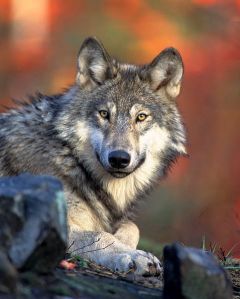There really are many uses of dragon’s blood in folklore and legend, many of which far predate the work of Albus Dumbledore. Here are some of the uses that strike me as the most interesting/cool/noteworthy.
“Dragon’s blood” can mean at least three different things in an early text or story. First, it can refer to the actual blood of a fantastic beast from mythology. Second, it can refer to a resin noted for its bright red color, obtained from a number of trees, most commonly Dracaena cinnabari, the so-called “dragon’s blood tree” from the island of Socotra. Finally, it can refer to the poisonous mineral cinnabar, also known as mercury sulfide, which was sometimes confused with dragon’s blood resin in ancient times—with disastrous results! The word “cinnabar” actually comes from Persian words meaning “dragon’s blood.”
Let’s begin with world mythology and the uses attached to the blood of an actual dragon:
(1) Acid. The dragon that eventually killed Beowulf had blood so acidic it could eat through iron. Medieval alchemists held that dragon’s blood was the only solvent capable of dissolving gold. There is, therefore, a nugget of truth in J. K. Rowling’s assertion that the twelfth use of dragon’s blood discovered by Dumbledore is “oven cleaner”: something as caustic as dragon’s blood would definitely remove baked-on food from practically any surface!
(2) Poison. In Armenian legend, dragon’s blood could be applied as a poison to weapons. In Slavic legend, the blood of a dragon was so vile and poisonous that the earth itself would not absorb it. It should be noted here that cinnabar is also highly poisonous. The effects of cinnabar poisoning include tremors, extreme mood changes, and loss of hearing progressing to severe mental derangement and death.
Given these first two uses, the positive nature of most of those that follow are more than a bit surprising. Perhaps we shouldn’t be surprised, however, if dragons are interpreted as wild, unpredictable creatures capable of bringing health and blessing as well as death:
(3) Source of Invulnerability. In Germanic legend, the hero Sigurd bathed in dragon’s blood and was granted invulnerability. Similarly, when the hero Ornit dipped his armor in the substance, it too became impervious to mundane weapons.
(4) Source of Secret Knowledge. When Sigurd accidentally tasted the blood of the dragon Fafnir, it granted him the ability to understand the language of birds. Some have interpreted this as the blood imparting a knowledge that is available to dragons but not to humans.
Finally, three more effects of a more general nature are sometimes claimed for dragons in western mythology. All of them probably derive from the primitive idea that one can gain the powers or abilities of something by consuming a part of it. Since dragons are noted for their keen eyesight, bravery, and long life, these should not be terribly surprising:
(5) Cure for Blindness. As noted below, dragon’s blood resin is touted as a cure for many physical ailments. Since dragons are associated with keen eyesight, this particular cure deserves special mention.
(6) Bravery Enhancer. Chinese and Indian Ayurvedic patent medicines for anxiety or depression sometimes include trace amounts of cinnabar.
(7) Lifespan Extender. Probably goes very closely with the invulnerability.
The next five are actual uses of dragon’s blood resin, which can be bought online and at various herbalist and other specialty shops.
(8) General Cure-All. On the island of Socotra, dragon’s blood is used as a cure-all for practically everything: fevers, kidney stones, wounds, tumors, respiratory and gastrointestinal complaints, etc. In ancient times, Greco-Roman naturalists such as Pliny the Elder and Dioscorides discussed the curative properties of this substance.
(9) Magic Enhancer. Those involved with Wicca, neopaganism, hoodoo, and other practices claim that burning powdered dragon’s blood as an incense can increase the potency of spells or rituals related to protection, banishing, prosperity, luck, love, and fertility.
(10) Coloring Agent. Dragon’s blood is also used as a dye, ink, or painting pigment. Socotrans use it to dye wool. Neopagan, Wiccan, Hoodoo, and other practitioners say dragon’s-blood ink can be used for writing spells, runes, magical seals, etc.
(11) Varnish. Dragon’s blood resin has been used to coat and stain wooden objects for centuries. In the eighteenth century, it was especially sought as a varnish for violins. Similarly, cinnabar was used in ancient Japan and elsewhere to lacquer both wooden and clay vessels.
(12) Mouthwash. This is another use to which Socotrans put dragon’s blood. Dissolved in water and gargled, it can serve as an astringent, a stimulant, and even a kind of toothpaste.
Finally, here are a few tidbits about the other parts of the dragon and the uses to which they can be put:
Dracontia: This was a stone said to exist within a dragon’s skull. If retrieved from a still-living dragon, it could be used as an antidote for a wide array of poisons. Simply boil it in water, then drink the water.
Bones: Powdered dragon bone (called longgu) has long been prized in Chinese medicine as a cure for madness, dysentery, diarrhea, and kidney ailments among other complaints. In some cultures, the first vertebra of a dragon can be worn as a charm to give the wearer sway with people of power. The same is also claimed for dragon’s teeth and heart-fat.
Teeth: Dragon’s teeth are also thought to have great medicinal value in the east, where they are used to treat madness, spasms, epilepsy, etc. In Greek mythology, dragon’s teeth can be sown in a field, and warriors will spring up.
Heart: Another detail from Germanic mythology is that eating a dragon’s heart is said to confer wisdom. At least, that is what the birds who watched Sigurd cook one said would happen. Pliny the elder claimed that consuming dragon’s heart confers strength and intelligence.
Fat: According to Pliny, the fat of dragons dried in the sun cures ulcers and repels undesirable beasts. Mixed with other ingredients, it can cure visual impairments, ulcers, and poisonous wounds.



